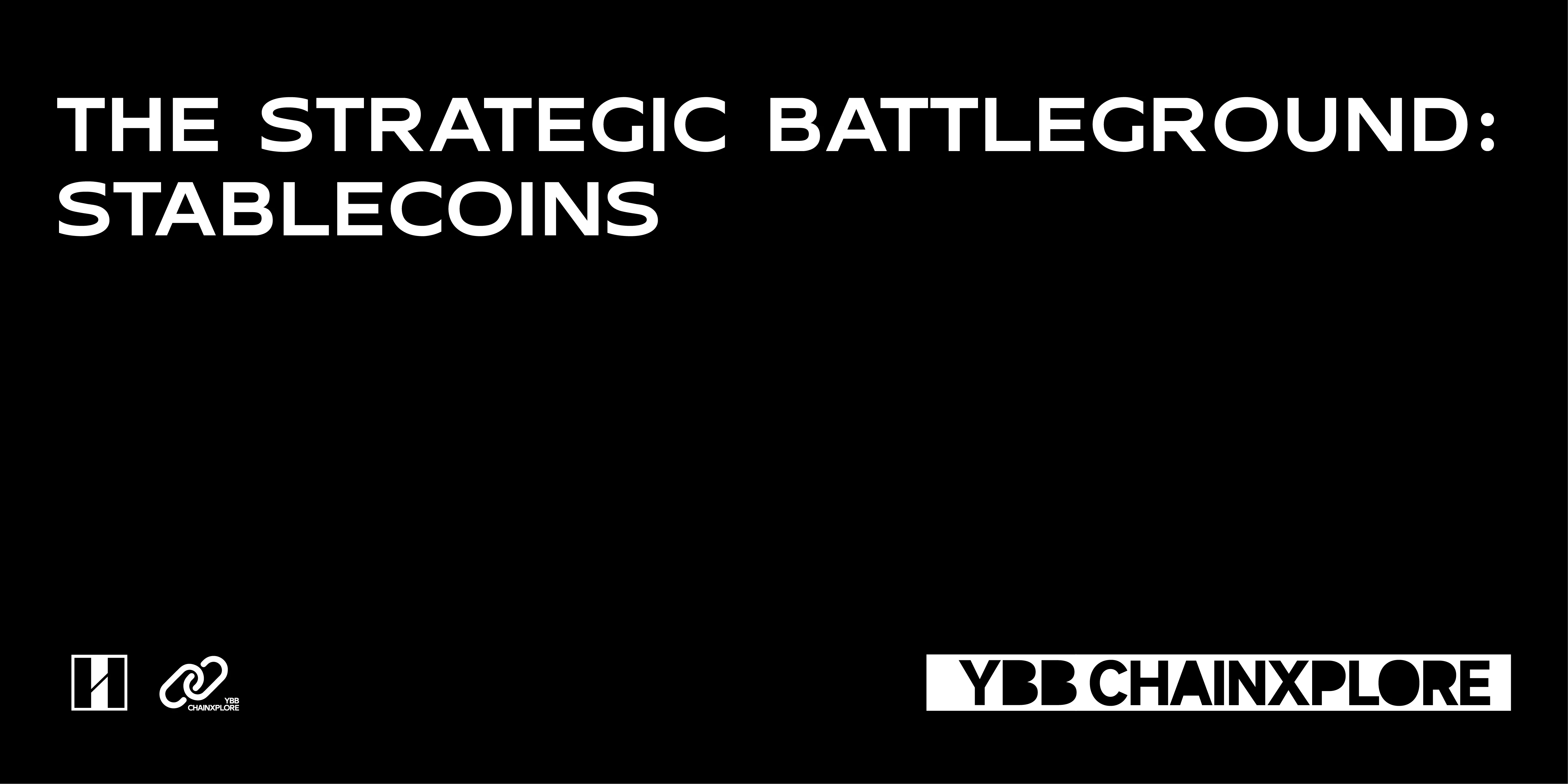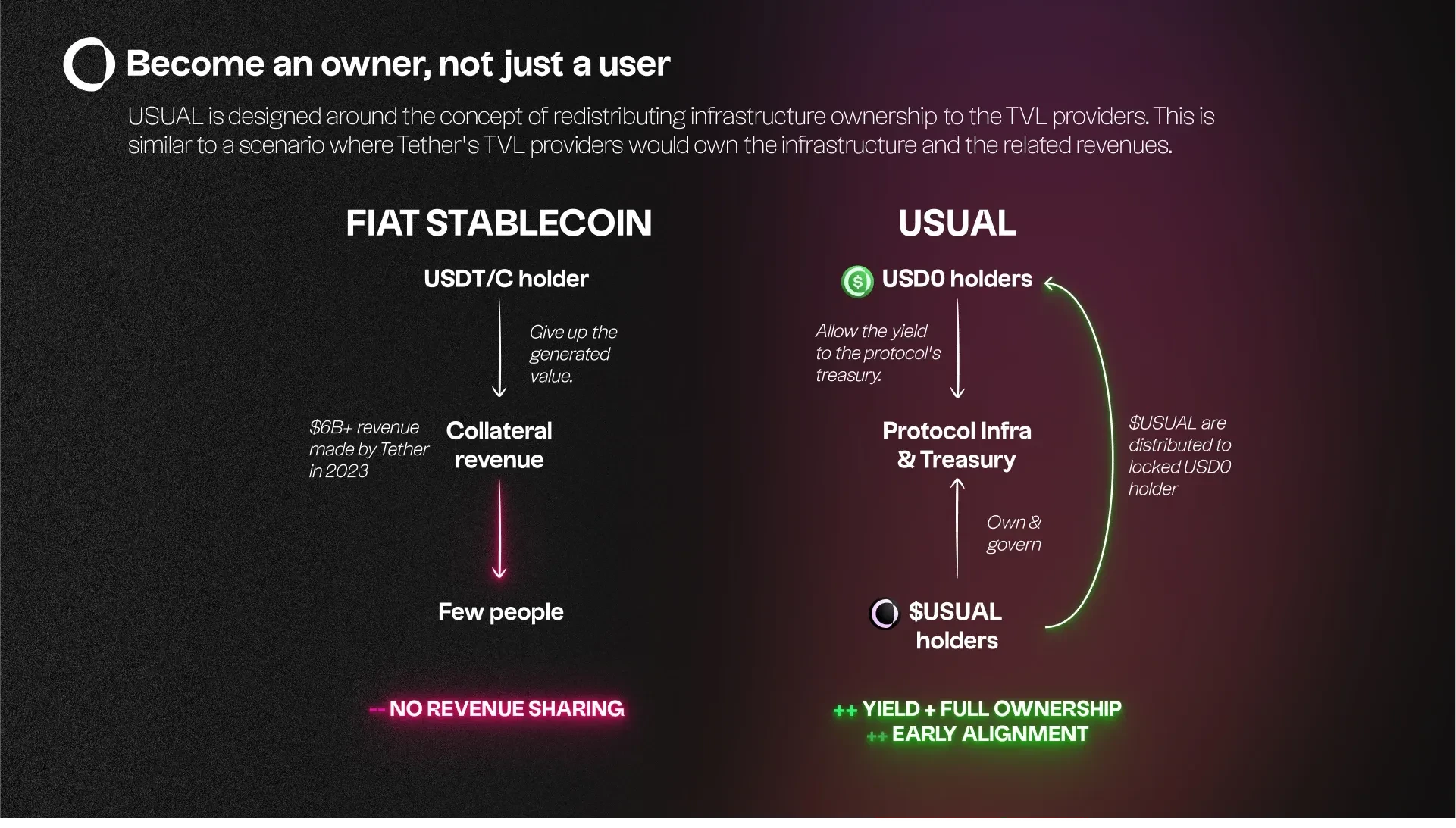Original author: YBB Capital Researcher Zeke

Preface
According to CoinGecko data, the total market value of stablecoins has exceeded the $200 billion mark. Compared with last year when we mentioned this track, the overall market value has nearly doubled and exceeded the previous historical high. I once compared stablecoins to a key link in the crypto world, serving as a key entry point in various on-chain activities as a stable means of value storage. Now stablecoins are beginning to move into the real world, demonstrating financial efficiency that exceeds that of traditional banks in retail payments, business-to-business transactions (B2B), and international transfers. In emerging markets such as Asia, Africa, and Latin America, the application value of stablecoins has gradually been reflected. The strong financial inclusion enables residents of third world countries to effectively cope with the high monetary inflation caused by government instability. Through stablecoins, they can also participate in some global financial activities and subscribe to the worlds most cutting-edge virtual services (such as online education, entertainment, cloud computing, and AI products).
Entering emerging markets and challenging traditional payments is the next step for stablecoins. In the foreseeable future, the compliance and accelerated adoption of stablecoins will become inevitable, and the rapid development of AI will also lead to further strengthening of the demand for stablecoins (computing power purchase, subscription services). Compared with the development in the past two years, the only thing that remains unchanged is that Tether and Circle still have a high degree of dominance in this track, and more start-up projects are beginning to turn their attention to the upstream and downstream of stablecoins. But what we are going to talk about today is still the issuers of stablecoins. Who can take the next piece of the pie in this extremely involuted track worth hundreds of billions?
1. Evolution of trends
In the past, when we mentioned the classification of stablecoins, we generally divided them into three categories:
Fiat-collateralized stablecoins: These stablecoins are backed by fiat currencies (such as the US dollar or the euro) and are usually issued at a 1:1 ratio. For example, each USDT or USDC corresponds to one US dollar stored in the bank account of the issuer. These stablecoins are relatively simple and straightforward, and in theory can provide a high degree of price stability;
Overcollateralized stablecoins: These stablecoins are created by overcollateralizing other high-quality crypto assets with high volatility and good liquidity (such as ETH, BTC). In order to cope with the potential risk of price fluctuations, these stablecoins often require a higher collateral ratio, that is, the value of the collateral must significantly exceed the value of the minted stablecoin. Typical representatives include Dai, Frax, etc.
Algorithmic stablecoins: The supply and circulation of stablecoins are completely regulated by algorithms. This algorithm controls the supply and demand of the currency and aims to keep the price of the stablecoin pegged to the reference currency (usually the US dollar). Generally speaking, when the price rises, the algorithm will issue more coins, and when the price falls, it will buy back more coins on the market. Representatives include UST (Lunas stablecoin).
In the years after the collapse of UST, the development of stablecoins has mainly been micro-innovation around Ethereum LST, and some over-collateralized stablecoins have been built through different risk balances. No one mentions the word stable anymore. However, with the emergence of Ethena at the beginning of this year, stablecoins have gradually determined a new development direction, that is, high-quality assets combined with low-risk financial management, thereby attracting a large number of users through higher yields, creating an opportunity to snatch food from the tigers mouth in the relatively solidified stablecoin market structure, and the three projects I mention below all belong to this direction.
2. Ethena

Ethena is the fastest growing non-fiat-collateralized stablecoin project since the collapse of Terra Luna. Its native stablecoin USDe has surpassed Dai with a volume of US$5.5 billion and is currently ranked third. The overall idea of the project is based on Delta Hedging of Ethereum and Bitcoin collateral. The stability of USDe is achieved by Ethena shorting Ethereum and Bitcoin on Cex at an amount equal to the value of the collateral. This is a risk hedging strategy designed to offset the impact of price fluctuations on the value of USDe. If the prices of both rise, the short position will lose money, but the value of the collateral will also rise, thereby offsetting the loss; and vice versa. The entire operation process relies on over-the-counter settlement service providers to implement, that is, the protocol assets are hosted by multiple external entities. The projects income comes from three main sources:
Ethereum staking income: The LST pledged by the user will generate Ethereum staking rewards;
Hedging transaction income: Ethena Labs hedging transactions may generate funding rates or basis spreads.
Liquid Stables fixed rewards: deposit interest in the form of USDC in Coinbase or in other stablecoins in other exchanges.
In other words, the essence of USDe is a packaged Cex low-risk quantitative hedging strategy financial product. Combining the above three points, Ethena can provide a floating annualized rate of return of up to dozens of points (currently 27%) when the market is good and liquidity is excellent, which is higher than the 20% APY of Anchor Protocol (the decentralized bank in Terra). Although it is not a fixed annualized rate of return, it is still extremely exaggerated for a stablecoin project. So in this case, does Ethena have the same high risk as Luna?
Theoretically, the biggest risk of Ethena comes from the collapse of Cex and custody, but this black swan situation is unpredictable. Another risk is to consider the run. The large-scale redemption of USDe requires a sufficient number of counterparties. Considering the rapid growth of Ethena, this situation is not impossible. Users quickly sell USDe, causing the secondary market price to decouple. In order to restore the price, the protocol needs to close positions and sell spot collateral to repurchase USDe. The whole process may convert floating losses into actual losses and ultimately aggravate the entire vicious cycle. 1 Of course, this probability is much smaller than the probability of USTs single-layer barrier breaking, and the consequences are not that serious, but the risk still exists.
Ethena also experienced a long period of lows in the middle of the year. Although its revenue dropped sharply and its design logic was questioned, there was indeed no systemic risk. As a key innovation in this round of stablecoins, Ethena provides a design logic that integrates on-chain and Cex, introducing a large number of LST assets brought by the mainnet merger into the exchange, becoming scarce short liquidity in the bull market, and also providing a large amount of handling fees and fresh blood for the exchange. This project is a compromise but extremely interesting design idea that can achieve high returns while maintaining good security. In the future, with the rise of order book Dex and matching more mature chain abstraction, I wonder if there is a chance to achieve a fully decentralized stablecoin according to this idea?
3. Usual
Usual is an RWA stablecoin project created by former French MP Pierre PERSON, who was also an advisor to French President Emmanuel Macron. The project has been greatly popular recently due to the news of Binance Launchpools launch, and its TVL has also rapidly jumped from tens of millions to around 700 million US dollars. The projects native stablecoin USD 0 adopts a 1: 1 reserve system. Unlike USDT and USDC, users no longer exchange fiat currency for equivalent virtual currency, but exchange fiat currency for equivalent US Treasury bonds. This is the core selling point of the project, sharing the profits obtained by Tether.

As shown in the figure above, the left side shows the operating logic of traditional fiat-collateralized stablecoins. Take Tether as an example. Users will not receive any interest in the process of casting fiat currency into USDT. To some extent, Tethers fiat currency can be regarded as getting something for nothing. The company used a large amount of fiat currency to purchase low-risk financial products (mainly U.S. Treasury bonds), and its income last year alone was as high as US$6.2 billion. Finally, these incomes were transferred to high-risk areas for investment, making money without doing anything.
On the right is the operating logic of Usual, whose core concept is Become An Owner, Not Just A User. The project is also designed around this concept, redistributing infrastructure ownership to total locked value (TVL) providers, that is, all users’ fiat currencies will be converted into RWA of ultra-short-term U.S. Treasury bonds. The entire implementation process is carried out through USYC (USYC is operated by Hashnote, which is currently a leading on-chain institutional asset management company and is supported by DRW’s partners). The final proceeds go into the protocol’s treasury and are owned and governed by the protocol token holders.
Its protocol token USUAL token will be distributed to the locked USD 0 holders (the locked USD 0 will be converted to USD 0++) to achieve revenue sharing and early alignment. It is worth noting that this lock-up period is as long as four years, which is consistent with the redemption period of some US medium-term treasury bonds (US medium- and long-term treasury bonds are generally 2 to 10 years).
The advantage of Usual is that it maintains capital efficiency while breaking the control of a number of centralized entities such as Tether and Circle over stablecoins, and divides the benefits equally. However, the longer lock-up period and the lower yield rate relative to the cryptocurrency circle may make it difficult to achieve large-scale growth in a short period of time like Ethena in the short term. For retail investors, the attraction may be more focused on the value of Usuals tokens. In the long run, USD 0 has more advantages. First, it enables citizens of other countries who do not have US bank accounts to invest more easily in US Treasury bond portfolios; second, it has better underlying assets as support, and the overall scale can be much larger than Ethena; third, the decentralized governance method also means that the stablecoin is no longer so easy to be frozen, which will be more preferred for non-trading users.
4. f(x)Protocol V2

f(x)Protocol is Aladdindaos current core product. We introduced the project in detail in last years article. Compared with the above two star projects, f(x)Protocol is less famous. The complex design also brings it quite a lot of defects, such as easy to be attacked, low capital efficiency, high transaction costs, complex user access, etc. But I still think that this project is the most noteworthy stablecoin project born in the 23-year bear market. I will give a brief introduction to the project here. (For details, please refer to the white paper of f(x)Protocol v1)
In the V1 version, f(x)Protocol created a concept called floating stablecoin, which is to split the underlying asset stETH into fETH plus xETH. fETH is a floating stablecoin whose value is not fixed, but will follow small changes in the price of Ethereum (ETH). xETH is a leveraged ETH long position that absorbs most of the fluctuations in the ETH price. This means that xETH holders will bear more market risks and returns, but it also helps stabilize the value of fETH, making fETH relatively more stable. At the beginning of this year, following this idea, the rebalancing pool was designed. Within this framework, there is only one stablecoin with strong liquidity and pegged to the US dollar, namely fxUSD. All other stable derivative tokens in stable leverage pairs no longer have independent liquidity, but can only exist in the rebalancing pool or as a supporting part of fxUSD.
A basket of LSDs: fxUSD is backed by multiple liquid staking derivatives (LSDs) such as stETH, sfrxETH, etc. Each LSD has its own stable/leverage pair mechanism;
Minting and Redemption: When users want to mint fxUSD, they can provide LSD or withdraw stablecoins from the corresponding rebalancing pool. In this process, LSD is used to mint stable derivatives of that LSD, which are then deposited into the fxUSD reserve. Similarly, users can also redeem fxUSD back to LSD.
So in simple terms, this project can also be seen as a super-complex version of Ethena and early hedging stablecoins, but in the on-chain scenario, the balancing and hedging process is very complicated. First, the volatility is split, and then the various balancing mechanisms and leverage margins have a negative impact on user access that has exceeded the positive attraction. In the V2 version, the entire design focus shifted to eliminating the complexity brought by leverage and better support for fxUSD. In this version, xPOSITION was introduced. This component is essentially a high-leverage trading tool, that is, a non-homogeneous, high-beta (i.e., highly sensitive to market price changes) leveraged long position product. This feature allows users to conduct high-leverage transactions on the chain without worrying about individual liquidations or paying funding fees, and the benefits are obvious.
Fixed leverage ratio: xPOSITION provides a fixed leverage ratio. The users initial margin will not be required to increase due to market fluctuations, nor will it lead to unexpected liquidation due to changes in leverage ratio;
No liquidation risk: Traditional leveraged trading platforms may cause users’ positions to be forced to close due to drastic market fluctuations, but the design of f(x) Protocol V2 avoids this from happening;
No funding fees: Typically, using leverage involves additional funding costs, such as interest on borrowed assets. However, xPOSITION does not require users to pay these fees, reducing overall transaction costs.
In the new stable pool, users can deposit USDC or fxUSD with one click to provide liquidity support for the stability of the protocol. Unlike the V1 stable pool, the V2 stable pool acts as an anchor between USDC and fxUSD. Participants can conduct price arbitrage in the fxUSD-USDC AMM pool and help fxUSD achieve stability. The source of income for the entire protocol is based on the opening, closing, liquidation, rebalancing, funding fees, and collateral income of positions.
This project is one of the few stablecoin projects that is not overcollateralized and fully decentralized. For stablecoins, it is still a bit too complicated and does not meet the minimalist design premise of stablecoins. Users must have a certain foundation to get started with peace of mind. In extreme market conditions, the framework design of various defense barriers may also harm the interests of users in turn when a run occurs. However, the goal of this project does meet the ultimate concept of every crypto person for stablecoins, a native decentralized stablecoin backed by top crypto assets.
Conclusion
Stablecoins are always a battleground, and they are also a track with extremely high barriers to entry in Crypto. In last years article On the verge of death, but stable but not stopping innovation, we briefly introduced the past and present of stablecoins, and hoped to see some more interesting decentralized non-overweight stablecoins emerge. Now a year and a half has passed, and we have not seen any startups other than f(x)Protocol working in this direction, but fortunately, Ethena and Usual have provided some compromise ideas, at least we can choose some more ideal, more Web3 stablecoins.
References
1. Marios View on Web3: In-depth Analysis of Ethenas Success and Death Spiral Risks










